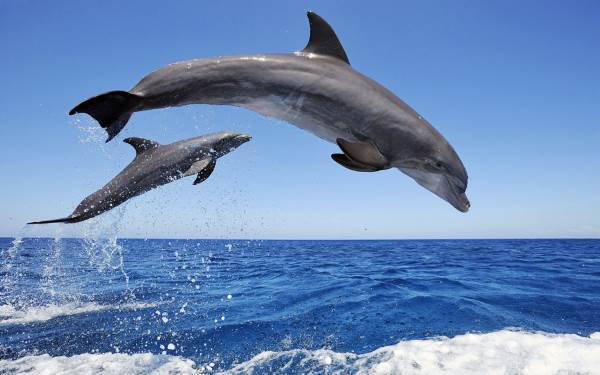There was no doubt that whales and dolphins were intelligent animals, but that their brains were very similar to humans to allow them to communicate, socialize and interact with each other, is a nice discovery. This is established by a team of scientists who published a study in Nature Ecology & Evolution.
On the fact that whales and dolphins they were intelligent animals there was no doubt, but that their brains were very similar to humans to allow them to communicate, socialize and interact with each other, is a nice discovery. This is established by a team of scientists who published a study in Nature Ecology & Evolution.
Whales and dolphins have complex relationships and use different language from group to group, as happens in different regions. It is as if each group spoke some kind of human dialect.
The human brain has evolved and expanded to better respond to the complex needs of society, a process that is technically known as 'encephalization' and which has led us today to be people who can create social relationships.
Now, according to a new study published in recent days, the same would be true for cetaceans that over the course of millennia have developed their brains to better live in society.
According to Michael Muthukrishna, an economic psychologist at the London School of Economics and co-author of the study, the researchers used two related theories, namely the Social-Brain hypothesis and the Cultural-Brain hypothesis, to make predictions about the various relationships between brain size. , social organization and extent of cetacean behaviors.
The study was conducted on 90 types of whales and dolphins in the wild showing how these animals undertake different communication and important alliances: they play and live together and some can also imitate the sounds of other sea creatures.
In short, even here, everything would be linked to the encephalation that conditions both the social structure and the group in general, even if certainly ecological factors, such as the diversity of the preys and the latitudinal range, have played an important role.
The research, done largely at the University of British Columbia, also finds that marine pressure affected brain growth.

"Cetaceans that have larger brains tend to be social animals, accustomed to herding," he says in the study. Kieran Fox, co-author of the study.
"The apparent co-evolution of the brains, social structure and behavioral richness of marine mammals provides a unique and striking parallel to the large brains and hyper-sociability of humans and other primates on earth," he says. Suzanne Schultz, an evolutionary biologist from the University of Manchester and lead author of the study.
As with humans, therefore, skills and knowledge have passed from generation to generation between whales and dolphins, not through genes but through the habits they mutually develop. Just think of how they collaborate and play with other species, sometimes taking care of offspring that are not their own.
On the same topic, you might be interested in:
- DOLPHINS SPEAK TO EACH OTHER LIKE HUMAN BEINGS, SCIENCE CONFIRMS IT
- ARE DOLPHINS MORE INTELLIGENT THAN DOGS?
It is clear, however, that they will never be able to imitate human behavior, but the research is an important turning point, also to better understand what makes humans unique.
“To move towards a more general theory of human behavior we need to understand what makes humans so different from other animals,” concludes Michael Muthukrishna.
Dominella Trunfio


























